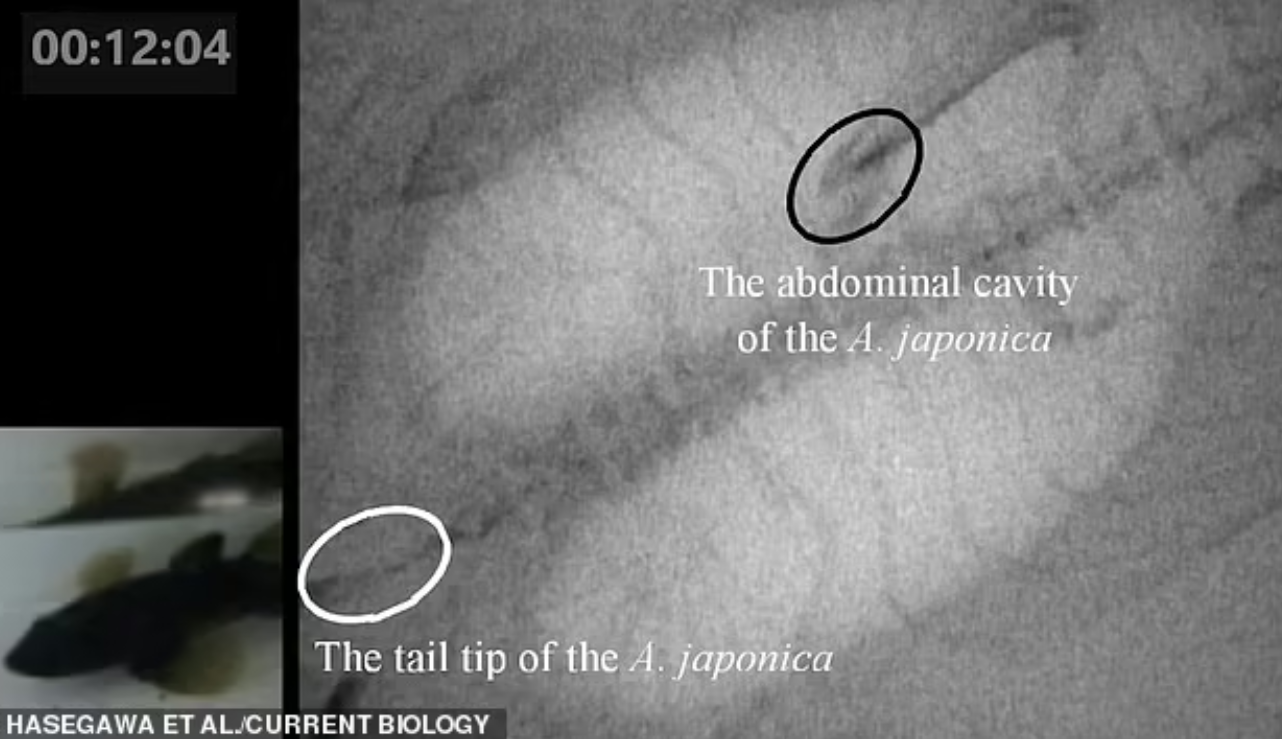News
Jaws of death. The network was struck by a video of Japanese eels fleeing from the stomach of a predator that ate them
Scientists from Nagasaki University have developed a new method of X-ray video to record inside the stomach of fish. Experts have known that eels escape death by escaping from the mouths of fish, but only now have they realized how they do it.
Using X-ray technology, the first-ever footage has been captured showing eels that have been eaten breaking free. The video, published by scientists in the journal Current Biology, is being shared en masse on foreign media and social networks.
The eels were injected with a contrast agent called barium sulphate, which made their thin bones visible in an X-ray image of the fish's insides, MailOnline writes.
It took the team a year to get clear enough evidence from the video. After 32 eels were eaten by the predator fish, all but four tried to escape by returning through the digestive tract to the esophagus and gills. About 13 managed to pull their tails out of the fish's gills, and nine successfully escaped through the gills.
On average, the escaping eels needed about 56 seconds to break free, says The Sun.
"At the beginning of the experiment, we assumed that the eels would escape directly from the predator's mouth into the gills. However, contrary to our expectations, seeing the desperate escape of eels from the predator's stomach into the gills was really surprising to us," said lead researcher Prof. Yuuki Kawabata.
In their paper, the researchers suggest that the eels' long body makes it more likely that their tails remain sticking out into the esophagus.
The researchers also note that the fish seem to realize that their dinner is trying to escape. And they often try to fight back: "many predatory fish show resistance by re-swallowing an eel that is trying to escape, during which they draw water into their mouths and eject it through their gills. The eels can take advantage of this flow of water to successfully escape through the predator's gills," study co-author Yuha Hasegawa told MailOnline.
Because larger eels were able to escape more often, the researchers believe it may be critical for young eels to quickly develop the strength and motor skills needed to escape.
"This discovery has given us a new insight: muscle strength and resistance to highly acidic and anaerobic environments, as well as their elongated and slippery morphology, are necessary for eels to quickly escape from the digestive tract before digestion," the scientists explained.
In the future, the researchers hope that this X-ray technology will come in handy for additional studies of how prey can hide after being eaten.
Only verified information from us in Telegram-channel OBOZ.UA and Viber. Do not fall for fakes!





























